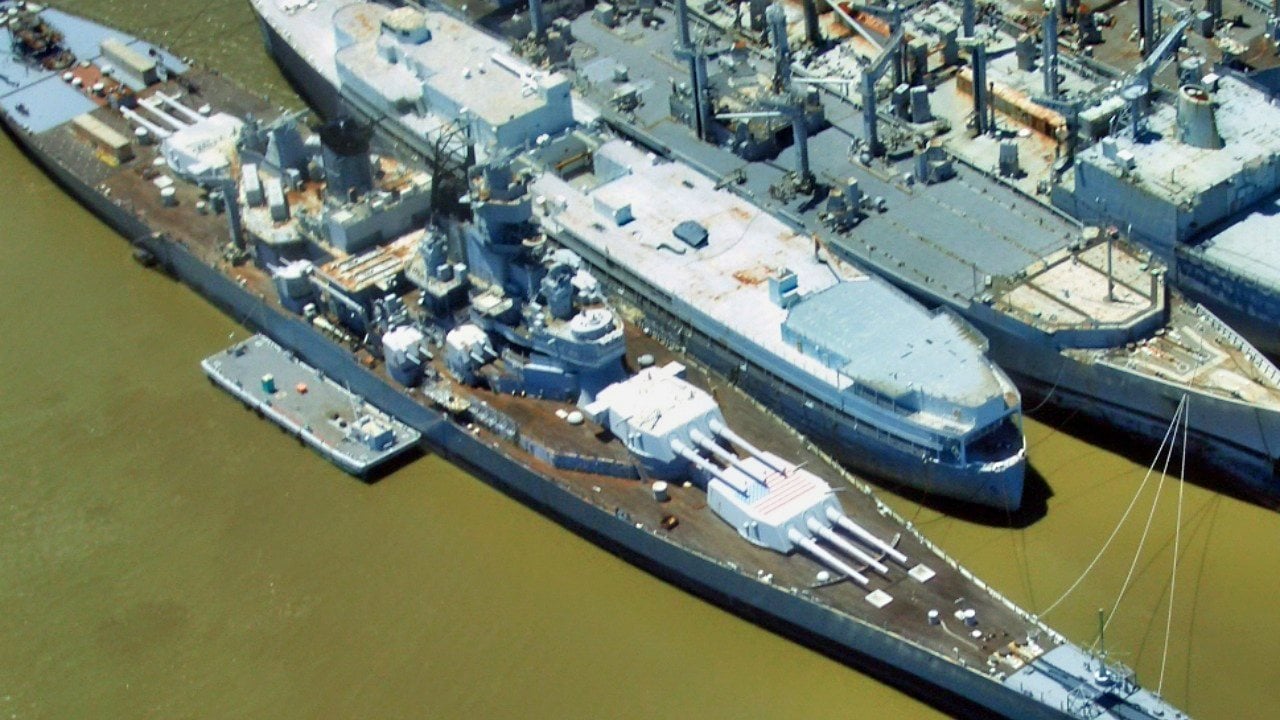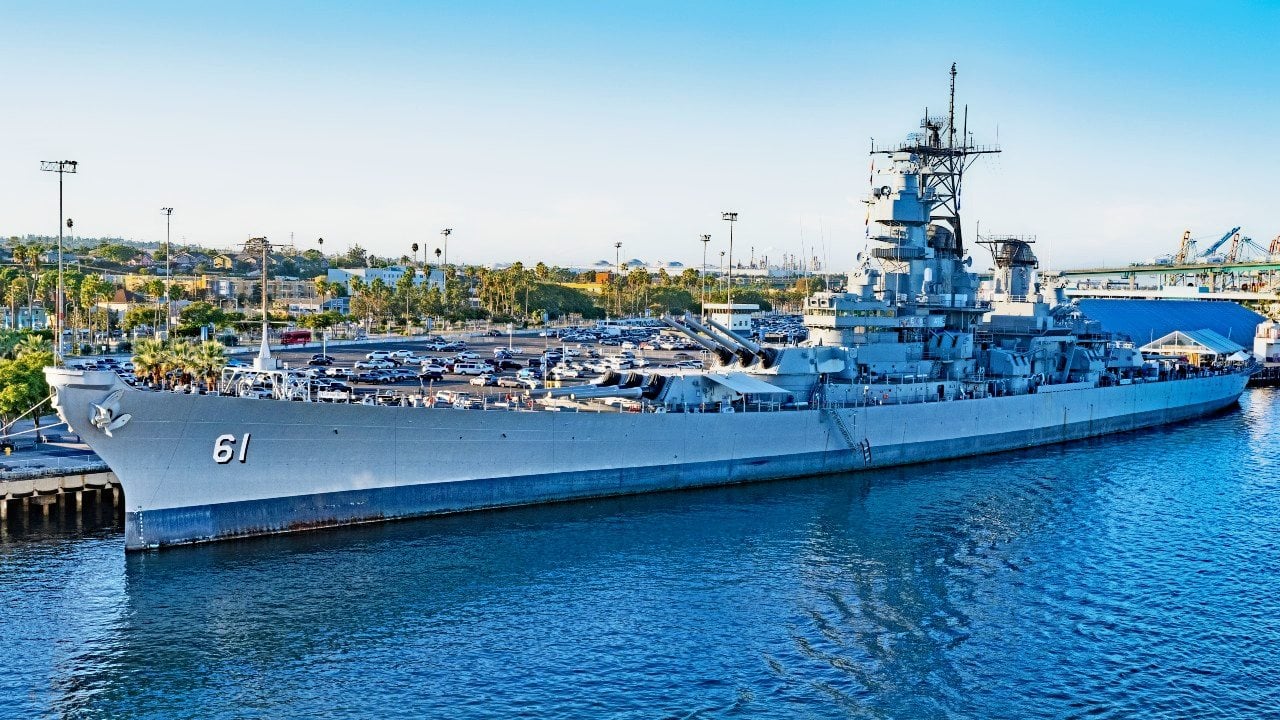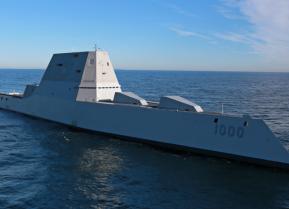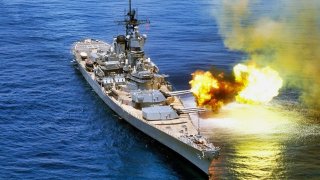5 Reasons the U.S. Navy's Mighty Battleships Will Never Go to War Again
There are many naval experts today who demand the return of the big gun battleships of World War II, like the U.S. Navy's Iowa Class. It will never happen.
Five Reasons The Battleship Won't Make a Comeback - There is something almost "romantic" about the battleship, and it is easy to see how the vessels have a certain mystique with history buffs and armchair admirals. The massive warships were once a symbol of naval dominance and national might and for decades served as a major factor in both diplomacy and military strategy.

In many ways, the big gun battleship was also closely tied to national pride, so it isn't surprising that in the early decades of the 20th century, the warships were commemorated in collectible cards alongside early baseball cards. In fact, Nation's Pride Caramel even released a series of cards devoted to America's early warships with the artwork produced by the American Lithographic Company of New York.
However, the devotion among naval enthusiasts will never be enough to see the massive iconic warships returned to service. Here are five key points as to why the sun has set on the era of the battleship.
Battleships: They Would be Truly Massive Targets
As previously reported, China is hardly alone in developing so-called "carrier killer" ballistic missiles such as the DF-21B and DF-26B road-mobile platforms. The latter has a reported range of 4,000km (2,485 miles) and it can be used in both conventional and nuclear strikes against ground as well as naval targets.
In an op-ed for Breaking Defense in August, Albert Palazzo of the University of New South Wales in Canberra, Australia, cited the British Admiral Horatio Nelson's famous saying, "A ship's a fool to fight a fort."
Palazzo suggested in the 21st century, "A ship is a fool to fight a missile defended coast," and argued that navies will need to reexamine how they operate. Control of the seas may not be enough anymore. An invader will need to establish local dominance with land, air, and cyber assets before ships sail into harm's way
That is a point that the Russian Navy learned the hard way in April 2022, when Ukraine used land-based Neptune missiles to sink the Black Sea Fleet's flagship Moskva. It was the largest warship lost in combat since the Second World War.
Battleships would simply be larger targets.
It Would be a Massive Cost to Refit the Warships
The United States Navy has preserved its four Iowa-class battleships so that technically they could be returned to service. Yet, as Robert Farley noted for The National Interest years back, "The second life of the class lasted, collectively, less than twenty-five years. The retirement of the battleships created a hole in U.S. seapower that the Navy struggled to fill in the 1990s, and still has not adequately addressed."
Yet, he also noted that reconfiguring the Iowa-class battleships was both controversial and enormously expensive. Farley pointed to the unforeseen crew costs, as well as the material condition of the ships. The situation has only worsened.

Retirement Hasn't Been Kind to Battleships
The United States lacks the industrial base to build a new battleship, so the only option would be to return those four Iowa-class battle wagons to service. Beyond the stated expense, there is the question of whether warships built by the greatest generation are actually fit for globetrotting voyages.
It is one thing to refurbish an old car from the 1940s and make it roadworthy, but it is another thing to suggest that the Iowa-class are even seaworthy after years of serving as museums. The ships have indeed been maintained, but it was almost three years ago that the former USS New Jersey (BB-62), which is preserved as a museum ship in Camden, New Jersey, across from Philadelphia, underwent a costly replacement of her wooden deck. A state grant provided $500,000 while additional money was raised from private donations.
Other preserved warships have also faced costly maintenance and that's just to see them saved as floating museum ships. Untold upgrades would be required to make BB-62 and her sister vessels seaworthy and able to resume service.
Changing World – Smaller is Better
Big gun battleships really have no place in the navies of the 21st century. Simply put, if the warships were truly needed, every major navy would have one.
As Farley added, "The reasons for decommissioning the battleships were sound at the time, and remain sound today; they were far too expensive to operate for the capabilities that they offered."
Smaller warships, including guided-missile destroyers, can do pretty much the same job as a big gun battleship while costing far less to operate.
The U.S. Navy is Already Short on Sailors
During the Second World War and Korean War, the Iowa-class battleships maintained a crew in excess of 2,700 sailors. When the ships were returned to service in the 1980s, the crew size was reduced to just over 1,800 – still a significant number of personnel.
The U.S. Navy is already struggling to fill its ranks, and as recently reported, while it now has the smallest fleet since the First World War, it also failed to reach its recruiting goals. If the U.S. Navy has fewer ships, and still doesn't have enough sailors, it would seem to be a bad strategy to put nearly 2,000 on a single vessel that isn't an aircraft carrier or amphibious combat ship!
A fleet of smaller vessels, supported by unmanned drones is likely the future of the U.S. Navy, not massive floating gun turrets that would make a tempting target for America's enemies.
Author Experience and Expertise
Peter Suciu is a Michigan-based writer. He has contributed to more than four dozen magazines, newspapers, and websites with over 3,200 published pieces over a twenty-year career in journalism. He regularly writes about military hardware, firearms history, cybersecurity, politics, and international affairs. Peter is also a Contributing Writer for Forbes and Clearance Jobs. You can follow him on Twitter: @PeterSuciu.
All images are Creative Commons.


